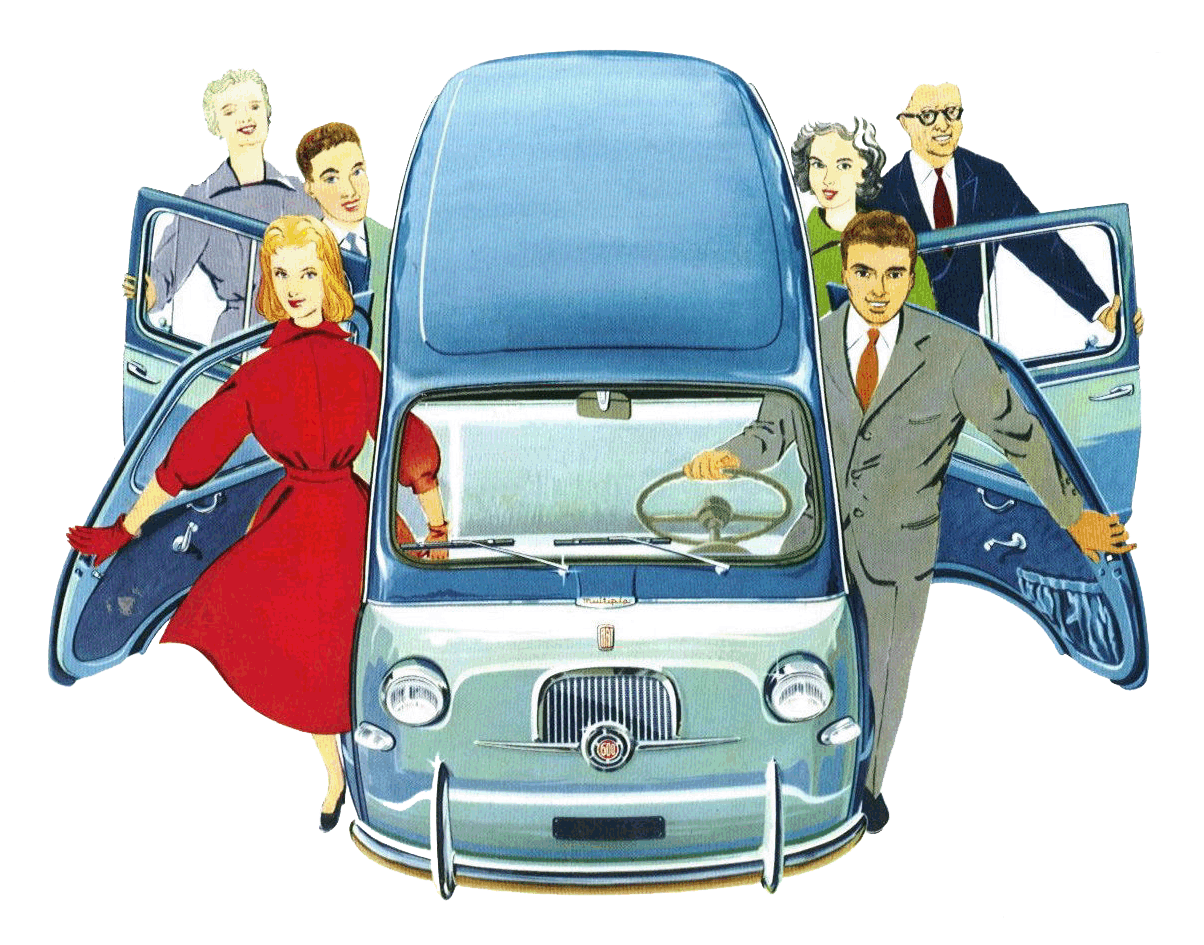Amazing Multipla Restoration
Rick Bradner bought his 1958 Fiat 600 Multipla as a basket case in 2005 with the intent of restoring it and using it as a "fun classic." To quote Paul Harvey, "and now it's time for the rest of the story": “A friend and local car guy had a Multipla for his shop vehicle and he had picked up "my" car in Kelowna as a parts car. Interestingly, these were sold here in Vancouver by the local British car dealer, although I have no idea if mine was sold locally. Although it had been vandalized, it was pretty sound, with not too much rust, all the glass, suspension, wheels, and seats, so I thought it would make a nice little project. I should know better of course.”


The first order of business was to strip out the car, which according to Rick was “straightforward as it's as basic as you would expect a post war Italian "peoples car" to be!”

Once stripped, the car was sent off to the body shop, where new floors were fitted and repairs were done to some of the lower sheet metal. The roof also needed repairs after damage described by Rick as if “someone had practiced tap dancing” on the roof of the car.


Luckily, with the exception of some rusty areas and the roof, the rest of the body was fairly straight, and Rick believes the car was abandoned fairly early in its life as evidenced by its odometer reading.


“Bodywork just like they did in Italy in the good old days"
The body work culminated with a fresh, all over, two tone paint job of the completed body shell.


As the bodywork was taking place, Rick began looking for a "big block" 903 engine from a later Fiat. He found just what he was looking for at a shop in Vancouver that had specialized in Fiats in the 60's & 70's. Over the last 30-odd years, they had moved on to servicing other brands of course, but they still had some “remnants of their previous endeavors”, and an unused 903 crate motor was among these left-overs. The motor itself was quite a mystery, having been unused, but strangely, having no serial number, no access machined for a distributor, and no dip stick. Rick states that “It had a fairly voluminous finned oil pan with those fins implying a longitudinal application.” It took quite a bit of modification to get it to work, including a camshaft change, as the 903 rotates the opposite direction to the 600, but according to Rick “it (was) worth it to have a zero hour engine!”

For those interested in the performance gains of a power plant swap such as this, Rick found some impressive graphs showing the before and after gains in both horsepower and torque.

Comparison of HP and torque; 1958 600 Multipla vs 1975 Fiat 127 with 903 motor. 21.2hp vs. 44hp and 50% more torque
One common problem using the 903 in a 600 application is that, in most cases, the distributor will contact the engine cover when closed. Two solutions to this problem are to run with cover slightly propped open, or as Rick did, cut a relief hole in the engine cover, which ends up being neatly concealed behind the rear license plate light.


As with any fine restoration project, the difference is in the details, and Rick’s car is a great example of this philosophy. One example is the work done on the steering wheel and column.


Another example of attention to detail is illustrated by the work done restoring the rest of the interior, including beautifully refurbished factory seating for six.


The “Multipla”, which loosely translates to “many forms”, was so named for its pioneering use transformable seating for additional cargo space. All four of the rear seats fold down to create a perfectly flat and surprisingly large cargo area that belies the car’s miniature proportions.

Rick’s efforts to keep as many original components as possible further illustrates his attention to detail and in some instances his creativity. One example of this was Rick’s desire to keep the car’s original style air filter housing, even though he opted for a later engine with a larger duel barrel Weber carburetor. Adapting the original air filter involved designing and fabricating additional sheet metal to adapt the original single barrel air filter housing to the new carburetor. The results speak for themselves.




Another common problem with installing a much larger and higher output engine in a 600 is making sure the 600’s cooling system is up to the task. Many others going down this same road have run into the same cooling issues Rick did with his car. Fortunately, he was able to achieve the cooling he needed with careful sealing of all factory engine bay pans and installing an aftermarket electric fan, although replacing the original generator with a new alternator was required to meet the demands of the electric fan at idle.

Rick was rewarded for all the long hours and superb work on a recent trip to take some scenic photos in preparation for listing his car for sale. After just a few minutes and about a half dozen pictures, his lovely Multipla was inundated with admirers.

According to Rick, “we have definitely decided to sell (the car), but at the moment we are currently just enjoying the time with a completed project and waiting on some clear weather to do some decent photos!”
A job well done and best of luck to Rick on his future sale of a fine example.









